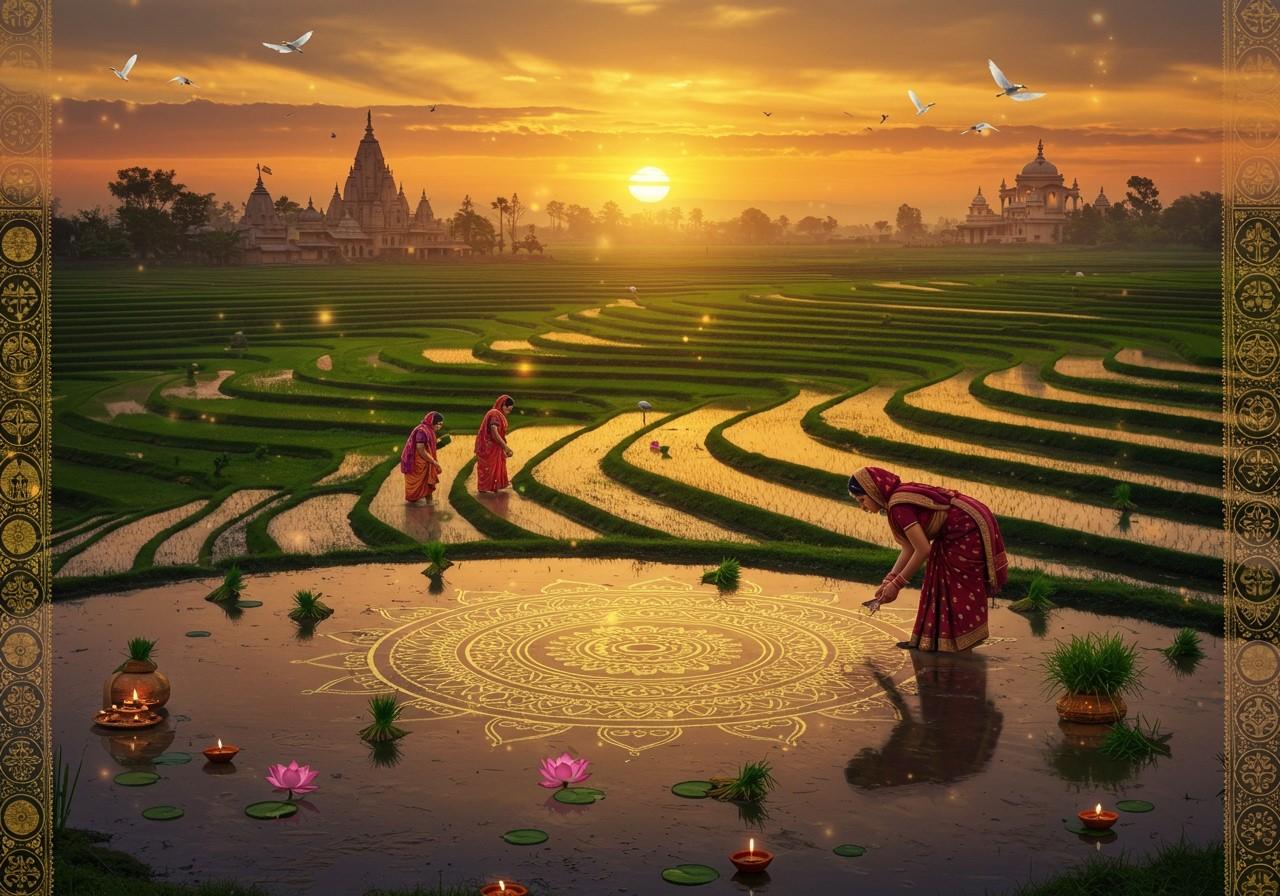
Rice isn’t merely a staple food in India; it’s deeply woven into the cultural and historical tapestry of the nation. This article delves into the historical significance of rice cultivation, particularly in Kerala, and explores how rice has become a potent symbol of prosperity and abundance in Indian society. By understanding these connections, we can truly appreciate the transformative role this humble grain has played over millennia.
A Journey Through Time: Rice Cultivation in India
Ancient Beginnings: Archaeological evidence suggests rice cultivation in India began around 2000 B.C., potentially predating its cultivation in China. Discoveries in the Ganges and Indus River Valleys confirm rice as a crucial crop, further corroborated by mentions in ancient texts like the Vedas and the Mahabharata, where it features prominently in diets and rituals.
Dynastic Influence: From the Mauryas to the Cholas, various dynasties nurtured and refined rice farming techniques. Rice became a cornerstone of ancient Indian trade, both within the subcontinent and with distant lands like China and Southeast Asia.
Modern Transformations: The mid-20th century Green Revolution dramatically altered India’s rice cultivation landscape. The introduction of high-yield varieties and modern agricultural practices revolutionized production. Today, traditional festivals and rituals, such as Pongal and Onam, continue to celebrate the vital rice harvest.
Kerala’s Rice Heritage: A Unique Story
Ideal Conditions: Kerala’s unique geography, characterized by a monsoon climate and fertile paddy fields, provides an ideal environment for rice cultivation.
Traditional Practices: Kerala maintains time-honored rice farming methods, including organic fertilizers and sophisticated water management practices like the ‘Puncha’ and ‘Virippu’ cropping seasons. Kuttanad, known as the “Rice Bowl of Kerala,” is renowned for its unique below-sea-level farming.
Cultural Significance: Rice cultivation is deeply ingrained in Kerala’s culture and social fabric, evident in communal farming practices and shared water resources. While modern techniques and government policies have influenced rice production, challenges like land fragmentation, labor shortages, and climate change persist.
Preservation Efforts: Recognizing the value of traditional rice varieties like ‘Njavara’ and ‘Pokkali’ for their nutritional and medicinal properties, significant efforts are underway to preserve these unique grains.
Rice: A Symbol of Abundance and Prosperity
Cultural and Religious Significance: In Indian culture, rice embodies prosperity, fertility, and life itself. It plays a central role in religious and cultural rituals, from weddings, where it’s thrown as a blessing, to festivals like Diwali, which features ‘Annakut,’ a grand offering of food to the deities.
The Indus Valley Civilization, known for its sustainable rice farming, revered the Divine Female as the Mother Goddess or Devi, further highlighting the spiritual connection with rice.
How Poojn.in Supports Your Rice-Related Traditions
Poojn.in, India’s leading cultural goods and services store, offers a wide range of products for rice-related rituals and ceremonies:
- Pure Akshat (sacred rice): Perfect for pujas and other religious ceremonies. Explore our selection of Akshat.
- Traditional Vessels: Authentic brass and copper vessels for storing ritual rice, adding a touch of tradition to your ceremonies. Find traditional vessels here.
- Complete Puja Kits: Convenient kits containing rice and other essentials for various ceremonies, simplifying your preparations. Browse our puja kits.
- Authentic Dhaan (Paddy): High-quality dhaan for harvest festivals and agricultural ceremonies, connecting you to ancient traditions. Shop for Dhaan.
- Special Rice Varieties: Source specific rice varieties used in particular religious rituals, ensuring authenticity in your practices. Discover special rice varieties.
Visit Poojn.in today to explore our complete collection or consult our puja experts for personalized guidance.
Embracing the Legacy: Rice in Modern India
Rice remains more than just sustenance; it’s a powerful symbol of India’s rich heritage. From ancient rituals to modern celebrations, rice continues to shape our lives. As we progress, preserving traditional cultivation methods and cultural practices associated with rice is crucial. By embracing these traditions while integrating modern techniques, we ensure rice continues to symbolize prosperity for generations to come, honoring our past and nurturing the essence of our culture.
FAQs
What is the history of rice cultivation in Kerala? Rice cultivation in Kerala boasts a rich history spanning over 3,000 years, facilitated by the state’s favorable wet climate and fertile soil. Traditional irrigation methods, employing canals and bunds, are still practiced today, showcasing a deep connection to the land.
Why is rice considered a symbol of prosperity in India? Rice symbolizes prosperity due to its role as a life-sustaining staple food. Its presence in rituals and ceremonies signifies good fortune and success. The act of throwing rice grains at weddings symbolizes blessings of wealth and happiness.
How has rice influenced Indian culture? Rice is integral to Indian culture, influencing daily meals, festivals, and rituals. Diverse regional rice dishes reflect unique traditions and heritage. Its significance extends to religious ceremonies and offerings, further solidifying its cultural importance.
What are some traditional rice dishes in India? From biryani and pulao to dosa, idli, and kheer, India offers a plethora of traditional rice dishes. Each region boasts its own unique recipes, showcasing the versatility of rice as a core ingredient, especially during festivals and special occasions.
How is rice used in Indian rituals? Rice serves as an offering to deities in various Indian rituals. It features prominently in ceremonies like weddings, where it’s sprinkled on couples for blessings. In some regions, rice is used to create intricate rangoli designs during festivals.
What types of rice are commonly grown in India? India cultivates a wide variety of rice, including basmati, jasmine, and parboiled rice. Each type possesses distinct flavor and texture profiles, catering to diverse culinary preferences. Basmati rice, known for its fragrance and long grains, holds particular renown.
How does rice cultivation impact the economy in India? Rice cultivation plays a vital role in the Indian economy, providing livelihoods for millions of farmers. As a major export product, it contributes significantly to national revenue. The rice industry supports various sectors, from agriculture to food processing.
What are the traditional methods of rice farming in India? Traditional Indian rice farming methods emphasize manual transplanting, the use of bullocks for plowing, and organic fertilizers. These eco-friendly practices, passed down through generations, promote sustainable agriculture.
Prasad Recipes: A Guide to Significance and Taste
South India’s Sacred Sites: A Guide to Exploring Hindu Temples


